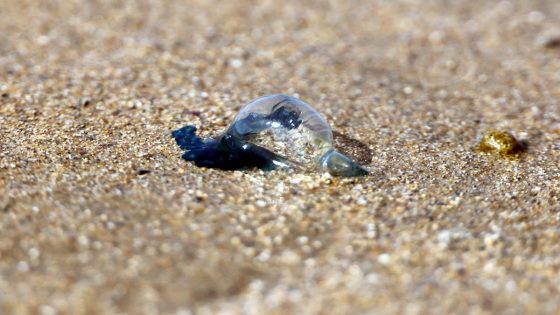Portuguese man o’ war sightings have surged along the beaches of southwestern France, raising concerns for European holidaymakers. Since mid-July, lifeguards at Soustons beach have reported around fifteen stings daily from this blue and white marine creature. On 25 July, the beach briefly closed to allow for safe removal of the Portuguese man o’ war, letting visitors resume their seaside enjoyment.
- Redders registreren dagelijks vijftien beten
- Portugese Oorlogsschepen veroorzaken pijn en jeuk
- Tentakels breken af en drijven weg
- Stranden sluiten door massale aanwezigheid
- Soort verspreidt zich naar zuid-Europa
- Intacte tentakels blijven irriterend na dood
Despite its jellyfish-like appearance, the Portuguese man o’ war is actually a colony of polyps with long, venomous tentacles that can reach up to 40 metres. The Antipoison Centre warns that these tentacles can cause severe pain, skin irritation, and even systemic symptoms. As of 2025-08-05 08:10:00, the presence of this species is becoming more frequent in southern European waters, prompting questions about its potential spread to nearby regions, including Belgium’s coastal areas.
Could these stinging creatures soon appear along the Belgian coast? And how should swimmers protect themselves? Here’s what you need to know.
Why is the Portuguese man o’ war appearing more often in European waters? Climate changes and shifting sea currents may be factors. This raises important considerations for beach safety:
- The Portuguese man o’ war’s tentacles deliver painful stings that can cause blisters and systemic symptoms.
- They float on the surface, making them hard to spot, and their tentacles can detach and drift with currents.
- Recent beach closures in France highlight the need for vigilance and quick response by lifeguards.
- Belgium’s cooler North Sea typically deters these creatures, but isolated sightings have occurred, so awareness is key.
As summer continues, Belgian beach visitors should stay informed about marine warnings and respect local safety guidelines. Could increased monitoring and public awareness prevent painful encounters? Staying cautious and prepared is the best way to enjoy the coast safely.
































